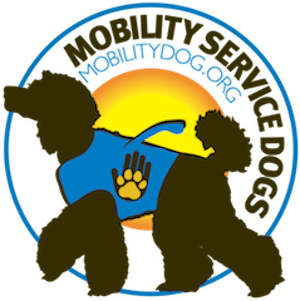Do Dogs Smile?
A Happy and Relaxed Corgi … but is he smiling? (Image by Csilla Ozsvath from Pixabay)
Dogs owners usually become adept at interpreting their pets’ emotional signals. They wiggle, they waggle, they wobble, they give us wide-eyed gazes. But do they actually smile? And if so, what do their lip motions really signify?
Humans Smile … Sometimes Genuinely
Facial expressions reflect emotional conditions and are often effective communication tools for expressing a state of mind, one animal (dog, human, or other) to another. Among humans, smiles and the laughter that often accompanies them, can be rich communication techniques.
Human smiles fall into two categories:
Those reflecting genuine pleasure or happiness; and
Those that have more superficial meaning (ranging from merely polite to downright threatening).
Genuine smiles are referred to as “Duchenne smiles,” (named after the French neurologist Guillaume Duchenne who was the first to identify them). A Duchenne smile involves more than just a parting of lips and a flashing of teeth. Lines around the eyes (appropriately enough, called laugh lines) are also evident when a person smiles with genuine joy.
Although dogs may not differentiate between Duchenne and less sincere forms of human smiling, research suggests dogs can:
Discriminate between photographs of their owners’ smiling faces and blank photographs.
Also discriminate between smiling faces and blank faces of unfamiliar people of the same gender as their owners.
But do dogs reciprocate a human smile with a smile of their own? When they appear to smile, are they conveying emotion or simply mimicking their human’s facial expression?
Is My Dog Really Smiling?
A black dog exhibiting a “happy face” (Image by Chiemsee2024 from Pixabay)
The domestication of dogs by humans transformed both dog behavior and canine physiology. Dogs possess a muscle called the “levator anguli oculi medialis” (or LAOM), which allows them to raise their inner eyebrow intensely. Wolves lack this muscle. When dogs use this muscle to shift their eyebrows, they produce an expression humans interpret as childlike and sad, triggering a nurturing response. Thus, like humans, dogs use the muscles around their eyes to enhance an expression that tends to bond them with their human companions.
Moreover, dogs do indeed engage their lips to convey messages. Often, the curling of the lip and exposing of teeth expresses aggressive intentions. Alternatively, a wide opening of the mouth, contraction of the muscle around the eyes and raising of the cheeks can be interpreted as your dog’s “happy face.”
But is Princess Really Happy?
Dogs Demonstrate they are Happy To See Us! (Image by Chiemsee2024 from Pixabay)
The difference between a genuine smile of pleasure and a smile with more superficial (or even sinister) significance comes down to brain function. Reactions within the central nervous system, specifically the limbic system, define the context within which emotions are expressed. This system is composed of several parts of the brain, which are found:
Above the brainstem and
Within the cerebrum.
Communication between these components is mediated by several elements of brain chemistry. Simply put, when a brain organ called the amygdala (which both dogs and humans possess) associates the presence of humans (or other animals) with a positive emotion, levels of emotion-regulating hormones and neurotransmitters increase in the canine (and human) brain. This, in turn, activates a canine’s facial muscles. Eyes become enlarged and the muscles of the mouth are retracted. Voilà, your dog is happy to see you and smiles to show it.
But Is It Real Happiness or Mimicry?
Although scientists have plotted the brain pathways through which experiences affect brain chemistry, which in turn affects facial expression, a question remains: to what extent are smiling dogs expressing genuine emotion as opposed to mere mimicry of human gestures? Are our dogs really happy to see us or are their smiles just a case of doggy-see-doggy-do? Are we interpreting their facial expressions accurately or simplistically construing their actions to be analogous to our own?
Whatever the answer, this much we know: canine smiles are an evolutionary adaptation by our canine companions to strengthen their bonds with us. They’ve learned we interpret a wide-eyed gaze accompanied by a relaxed jaw as a positive expression, which we often reciprocate in kind. And isn’t that what communication boils down to, after all?



